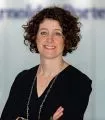Beatriz San Martin and Shishu Chen examine the recent Regeneron ruling in the UK Supreme Court, and what it means for reliance on patents for second medical uses.
When can a patent claiming a range of products for a ground-breaking invention amounting to a principle of general application be sufficiently enabled? This was the central question that needed to be addressed by the UK Supreme Court in the Regeneron v Kymab case. The long-awaited answer came on 24 June 2020 when the Supreme Court held that sufficiency requires "substantially the whole of the range of products within the scope of the claim to be enabled to be made by means of the disclosure in the patent" and this is irrespective of whether the patent discloses a principle of general application.
To read the full article click here
Originally published 29 July, 2020
The content of this article is intended to provide a general guide to the subject matter. Specialist advice should be sought about your specific circumstances.


